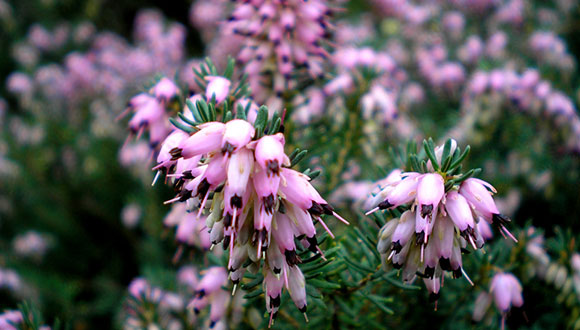What will the future smell like?
Researchers from CREAF, CSIC, and the Institute of Agricultural and Environmental Sciences of Estonia have found that flowers are becoming more fragrant as the global mean temperature rises. In addition, intense heat provokes changes in the composition of floral aromas, transforming the odors of natural areas. This could lead to pollinizers mistaking the identity of flowers, especially specialist species whose flower visits are guided by their own innate olfactory preferences.

A warmer, more fragrant world with new perfume is expected by scientists who study the relationship between climate change and emissions of volatile organic compounds (VOCs) produced by plants. VOCs are aromatic compounds emitted by various plant parts such as leaves and flowers, important for communication between plants as well as other living organisms (predators, pollinizers, etc.)
The study led by CREAF and recently published in the journal Global Change Biology demonstrates that in a hotter world, plants would emit a greater quantity of odorous volatile compounds, though the exact increase could vary depending on the species and moment of the year. “We have seen that flowers of plants which at the moment are not very fragrant, for example holm oak, would be those whose fragrance would increase to the greatest degree,” comments Gerard Farré, CREAF researcher.
The researchers calculated that, depending on the species, an increase of 1º C could provoke flowers to emit up to 1,4 times more organic compounds, and in an extreme scenario of an increase of 5º C, emissions could be multiplied by 9,1.
The relative composition of floral fragrances could also change to varying degrees. In fact, the study confirmed that the prostrate canary clover (Dorycnium pentaphyllum) or the Spanish broom (Spartium junceum) would emit new fragrant compounds which would change their fragrance, and that heather, slender sow thistle (Sonchus tenerrimus) or members of the genus Dodonaea would emit especially high amounts of specific aromatic compounds such as limonene or eucalyptol.
Will pollinizers be able to learn the new chemical language of flowers?
These changes could mean that plants which at the moment do not emit very strong odors for lack of need to attract pollinizers, such as the flower of the holm oak, would begin to smell more strongly.
If plants change their odor, pollinizers could become confused and not find the flowers they need, or perhaps mistakenly visit others.
“There are pollinators which are to a large degree reliant on constant learning based on the flowers of their surroundings, while others are dependent on innate preferences. For this reason, it is expected that some pollinizers could adapt and respond dynamically to changes in the chemical composition of odors,” comments the researcher.
Farré-Armengol, G., Filella, I., Llusià, J., Niinemets, Ü. and Peñuelas, J. (2014), Changes in floral bouquets from compound-specific responses to increasing temperatures. Global Change Biology. doi: 10.1111/gcb.12628







